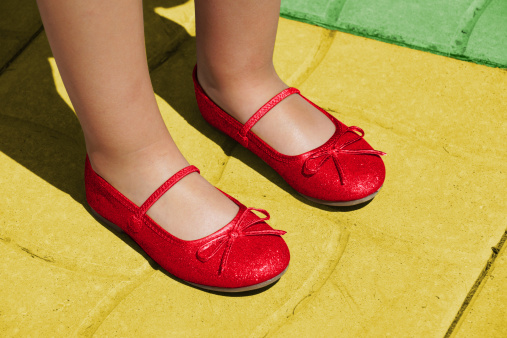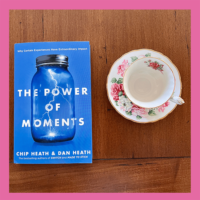Following the Yellow Brick Road: See Seven Powerful Insights From the Wizard of Oz
One recent Saturday afternoon, I checked out the Academy Museum of Motion Pictures in L.A. A central exhibit currently on display at the museum is the tribute to Frank Baum’s The Wizard of Oz. Perusing the collections of props and story books from the film’s production got me thinking about the meaning of “following the yellow brick road.”
So I started researching, and it turns out that many experts have explored more deeply what Dorothy Gale’s visit to Oz represents.
Here are some theories and lessons I like most, along with my rose-colored interpretations:
1. What you dream becomes your reality.
“And so the film’s message is, dare to dream the highest possible dream because whatever you dream will become your reality. You can make it your reality—your mind is that powerful.” – Shunyamurti of Satyoga.
Shunyamurti believes the entire movie represents Dorothy’s inner psyche as she confronts deep existential issues.
Her experiences, ranging from the tornado to munchkin land to following the yellow brick road, reflect her inner state at the time. It’s all an outward projection of what’s happening inside. She’s dreaming her reality as she moves along her path.
Dorothy dreams of going somewhere over the rainbow, and her dream and pure that she ultimately achieves it. Your dreams truly do become your reality.
2. Dorothy doesn’t know who she truly is at first.
“The first question that Glinda asks is, she says, “Are you a good witch or a bad witch?” And she says, “I don’t know, I’m not a witch.” But of course, she is a witch, but she doesn’t know it yet.” – Shunyamurti of Satyoga.
In her path to realizing her true self, she has no idea of the depth of power she has inside.
3. We project our fears and strengths onto others.
The scarecrow, tin man, cowardly lion, wizard, wicked witch, and Glinda the good witch all represent parts of herself that she must integrate as she follows the yellow brick road to the land of Oz.
This makes me think of the quote by Anais Nin, “We don’t see things as they are, we see them as we are.” Dorothy feels she lacks the brains, heart, and bravery needed to accomplish her goal of returning home. These characters shine a light on her process of discovering they (and she) do possess these qualities – and always have.
The good witch, evil witch, and wizard are also parts of herself that she comes to terms with throughout the movie.

4. The slippers are always on her feet.
“But it turns out she can’t take off the slippers, even though she agrees to do to the trade, they have their electromagnetic defense shield—the slippers have a power that she does not yet have—so we could say it’s a dissociated part of her soul that has not yet been integrated into her consciousness, but it’s already functioning.” Shunyamurti of Satyoga.
The slippers can’t be removed in the same way that our divine knowing can’t be removed.
We are born wise; sometimes, we must overcome many obstacles to discover this.
5. “You’ve always had the power, my dear, you just had to learn it for yourself.”
Glinda, the good witch, assures Dorothy that her power has always been within.
There is no external power, and the wizard isn’t the almighty force she believes he is. Her true power, divine connection, is inside.
6. Everything she seeks is within.
“She’s going back to her backyard, but not because her backyard has the goodness and the infinite beauty and perfection she’s looking for, no—it’s because it isn’t there. And it isn’t there because it’s in her. She has never lost it.” – Shunyamurti of Satyoga.
When Dorothy realizes this, she can be anywhere and access the beauty and wisdom inside. Her search is over.
7. Following the yellow brick road, you realize, “There’s no place like home.”
Home is a place we associate with familiarity, love, a safe place, and a place of origin. – A.N. news
Home is our true source, our divine essence. We’re safe when we feel at home within ourselves.
It’s almost impossible to believe that this 1939 film has such meaning even today. The lessons in the film transcend time.
What do you think? Do you have any additional thoughts to add? Please let me know in the comments below :-)






Leave a Reply
Want to join the discussion?Feel free to contribute!